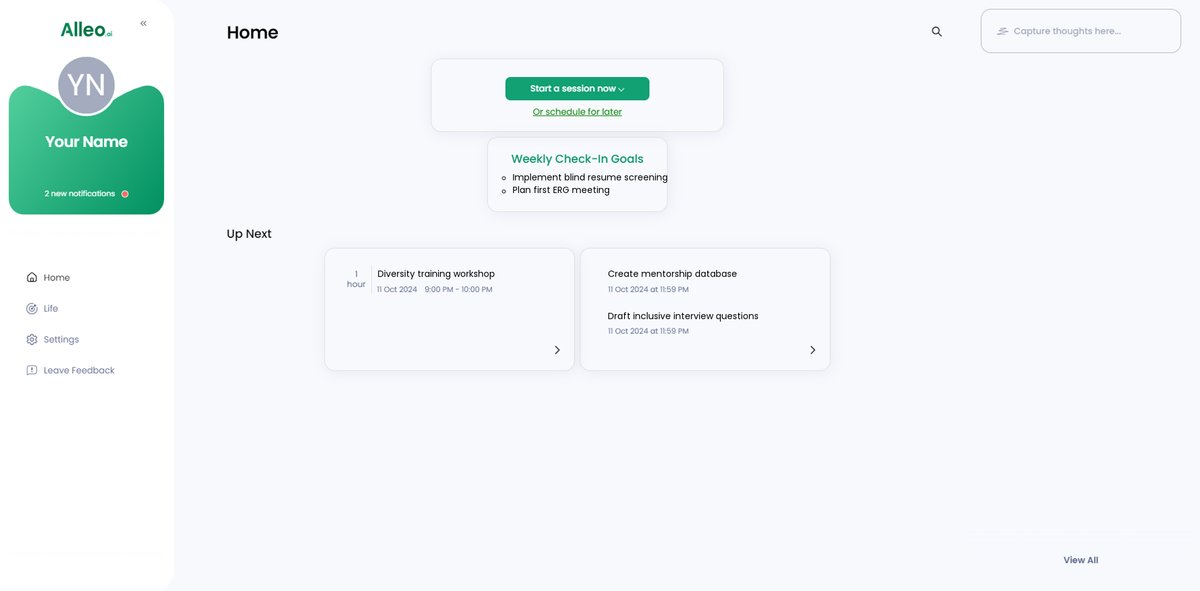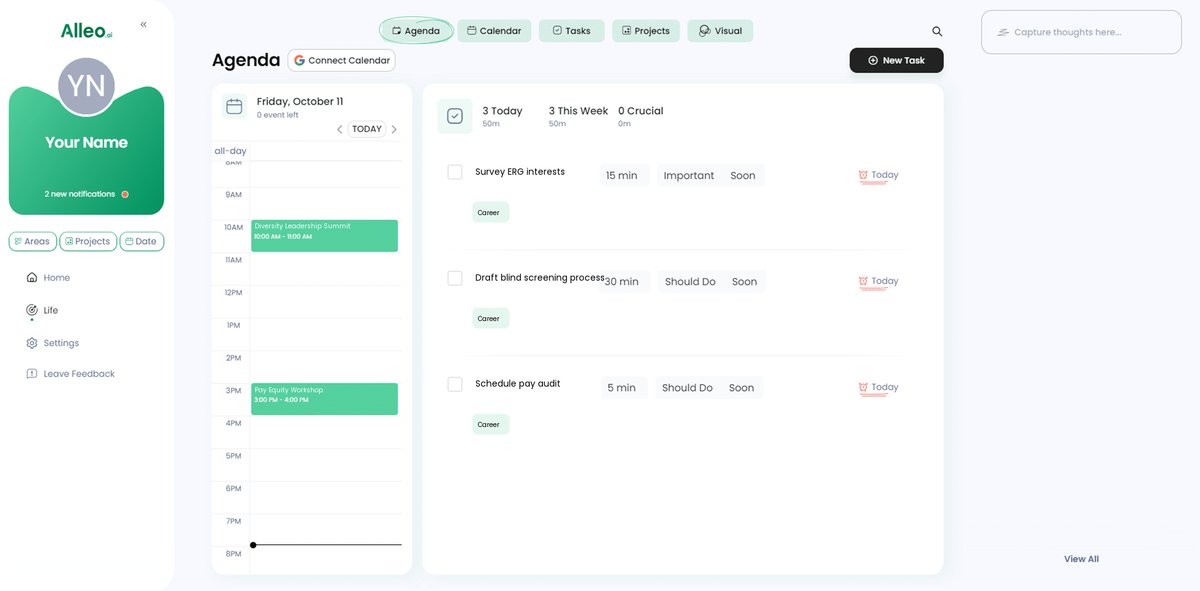Implement Diversity & Equality Principles: 6 Proven Workplace Strategies
Are you struggling to turn diversity and equality principles from theory into practice in your workplace? Implementing workplace diversity principles can be challenging, but it’s crucial for creating an inclusive company culture.
As a life coach, I’ve helped many professionals navigate these challenges. In my experience, translating these principles effectively can transform an organization through workplace inclusion strategies and employee diversity training programs.
In this article, you will discover practical strategies to implement diversity and equality principles, including:
- Blind resume screening for diversity recruitment methods
- Establishing employee resource groups to promote cultural sensitivity in the workplace
- Conducting pay equity audits to support gender equality initiatives
Let’s dive into these equal opportunity employment practices and inclusive leadership techniques.

Understanding the Hurdles to Implementing Diversity and Equality
Implementing workplace diversity principles can be daunting when translating them into actionable steps. Many recruiters face unconscious biases which subtly influence hiring decisions, hindering diversity recruitment methods.
This often leads to homogenous teams that lack diverse perspectives, undermining inclusive company culture development.
In my experience, several clients report a lack of structured employee diversity training programs to support diverse talent. This oversight can result in talented individuals feeling undervalued, leading to disengagement and high turnover rates.
It’s frustrating, isn’t it?
Additionally, failing to address these challenges can significantly impact organizational performance. Companies might see reduced innovation and lower employee morale due to inadequate workplace inclusion strategies.
These issues often snowball, creating larger organizational problems and potentially leading to workplace discrimination.
So, what’s the solution? Let’s explore practical strategies for implementing workplace diversity principles next.

Practical Roadmap to Implementing Diversity and Equality
Overcoming this challenge requires a few key steps. Here are the main areas to focus on when implementing workplace diversity principles and making progress.
- Implement Blind Resume Screening Process: Use AI tools to anonymize resumes and remove biases, enhancing diversity recruitment methods.
- Establish Employee Resource Groups (ERGs): Support groups that foster inclusion and engagement, promoting workplace inclusion strategies.
- Conduct Regular Pay Equity Audits: Ensure fair compensation across all demographics, supporting gender equality initiatives.
- Offer Inclusive Leadership Training Programs: Train leaders to embrace and promote diversity, focusing on inclusive leadership techniques and unconscious bias awareness.
- Create Standardized, Bias-Free Interview Process: Standardize interviews to eliminate biases and support equal opportunity employment practices.
- Develop Mentorship Programs for Diverse Talent: Pair mentors with diverse employees for growth, enhancing inclusive company culture development.
Let’s dive in to these strategies for implementing workplace diversity principles!
1: Implement blind resume screening process
Implementing blind resume screening is crucial to reduce bias in hiring and promote diversity, serving as a key strategy for implementing workplace diversity principles.
Actionable Steps:
- Use AI tools to anonymize resumes. Implement software that removes names, gender, and other identifying information from resumes, enhancing diversity recruitment methods.
- Conduct training sessions for hiring managers. Explain the benefits and processes of blind screening, and set up regular refresher courses as part of employee diversity training programs.
- Schedule quarterly reviews. Ensure the screening process remains effective and up-to-date, supporting equal opportunity employment practices.
Explanation: These steps matter because they help mitigate unconscious biases, leading to more diverse candidate pools and fostering workplace inclusion strategies.
By using AI tools and regular reviews, companies can maintain fairness in hiring and promote cultural sensitivity in the workplace. For more insights, check out this Culture Amp guide on DEI practices.
Key benefits of blind resume screening include:
- Reduced unconscious bias in hiring, supporting gender equality initiatives
- Increased diversity in candidate pools, enhancing inclusive company culture development
- Focus on skills and qualifications over personal attributes, aiding workplace discrimination prevention
Starting with a blind resume process can significantly enhance your organization’s diversity efforts and contribute to implementing workplace diversity principles effectively.
Let’s move on to the next strategy.

2: Establish employee resource groups (ERGs)
Creating ERGs is essential for fostering an inclusive and supportive workplace environment when implementing workplace diversity principles.
Actionable Steps:
- Survey employees to identify which groups would be most beneficial for workplace inclusion strategies. Set up a timeline for the formation and initial meetings.
- Allocate a budget and designate meeting spaces. Assign executive sponsors to each ERG to ensure support and visibility, promoting inclusive leadership techniques.
- Conduct bi-annual surveys to assess the impact on employee satisfaction and engagement, supporting equal opportunity employment practices.
Explanation: These steps matter because ERGs provide a platform for diverse voices, improving engagement and retention while implementing workplace diversity principles.
By supporting ERGs, companies can address employee needs and enhance inclusivity, contributing to inclusive company culture development.
For more insights, check out this Culture Amp guide on DEI practices.
Let’s move on to the next strategy for implementing workplace diversity principles.

3: Conduct regular pay equity audits
Conducting regular pay equity audits is essential to ensure fair compensation and foster an inclusive workplace when implementing workplace diversity principles.
Actionable Steps:
- Collect salary data: Gather and analyze current salary data across all demographics to establish a baseline for equal opportunity employment practices.
- Implement corrective actions: Develop a plan to address identified pay disparities and communicate changes transparently, supporting gender equality initiatives.
- Schedule regular audits: Conduct annual or bi-annual pay equity audits to maintain ongoing fairness and support workplace inclusion strategies.
Explanation: These steps help organizations identify and correct pay disparities, promoting equity and trust among employees while implementing workplace diversity principles.
Regular audits also align with industry trends and best practices for inclusive company culture development. For more insights on promoting equity, check out this Achievers blog on equity in the workplace.
Moving on to the next strategy will further enhance your diversity efforts and inclusive leadership techniques.
4: Offer inclusive leadership training programs
Offering inclusive leadership training is vital for implementing workplace diversity principles and fostering a diverse and equitable workplace.
Actionable Steps:
- Develop a comprehensive curriculum. Create employee diversity training programs that focus on inclusive leadership techniques and offer both workshops and online courses.
- Match leaders with diverse mentees. Encourage leaders to participate in mentorship programs to foster understanding and growth, promoting workplace inclusion strategies.
- Evaluate the effectiveness of training programs. Use feedback forms and performance reviews to assess impact and make improvements in cultural sensitivity in the workplace.
Explanation: These steps matter because they equip leaders with the skills to promote diversity and inclusion effectively. Inclusive leadership leads to better team collaboration and innovation, supporting equal opportunity employment practices.
For more insights, check out this Achievers blog on equity in the workplace.
Key components of effective inclusive leadership training:
- Understanding unconscious bias and its impact on workplace discrimination prevention
- Developing active listening and empathy skills to support gender equality initiatives
- Learning to create psychologically safe environments for inclusive company culture development
Transitioning to inclusive leadership training can significantly enhance your organization’s diversity efforts and improve diversity recruitment methods.

5: Create standardized, bias-free interview process
Creating a standardized, bias-free interview process is crucial for implementing workplace diversity principles and fostering a fair and inclusive hiring environment.
Actionable Steps:
- Develop a set of standard questions and evaluation criteria. Ensure all candidates are evaluated on the same scale for consistency, aligning with equal opportunity employment practices.
- Conduct workshops on recognizing and mitigating biases. Train interviewers to identify and counteract their unconscious biases, implementing employee diversity training programs.
- Implement a feedback loop. Collect feedback from both interviewees and interviewers to continuously improve the process and enhance workplace inclusion strategies.
Explanation: These steps matter because they help ensure that all candidates are assessed fairly, reducing the impact of unconscious biases and supporting diversity recruitment methods.
By using a standardized framework and ongoing training, organizations can create a more inclusive hiring process and develop an inclusive company culture. For more insights, check out this Qooper guide on DEIB.
Taking these steps can significantly enhance your organization’s diversity efforts, leading to a more equitable workplace and promoting cultural sensitivity in the workplace.

6: Develop mentorship programs for diverse talent
Developing mentorship programs for diverse talent is crucial for implementing workplace diversity principles and fostering growth and inclusion within your organization.
Actionable Steps:
- Create a mentor database: Identify experienced employees willing to mentor diverse talent. Track the number of mentor-mentee pairs to measure engagement and support workplace inclusion strategies.
- Set clear goals and outcomes: Develop goal-setting templates and schedule regular check-ins to ensure progress and accountability, aligning with equal opportunity employment practices.
- Provide training and resources: Offer mentors and mentees training sessions and resources to help them build effective, supportive relationships, incorporating employee diversity training programs and cultural sensitivity in the workplace.
Explanation: These steps matter because they provide structured support for diverse employees, enhancing their growth and engagement. Mentorship can significantly improve retention and development, supporting inclusive leadership techniques and unconscious bias awareness.
For more insights, check out this Qooper guide on DEIB.
Benefits of mentorship programs for diverse talent:
- Increased career advancement opportunities, supporting gender equality initiatives
- Enhanced sense of belonging and inclusion, contributing to inclusive company culture development
- Improved retention rates for diverse employees, complementing diversity recruitment methods
Implementing mentorship programs can greatly enhance your organization’s diversity and inclusion efforts, supporting workplace discrimination prevention and overall implementation of workplace diversity principles.

Partner with Alleo on Your Diversity and Equality Journey
We’ve explored the challenges of implementing workplace diversity principles. Did you know you can work directly with Alleo to make this journey easier and faster?
Set up an account with Alleo and create a personalized plan for implementing workplace diversity principles. Our AI coach will guide you through each step, providing tailored support for workplace inclusion strategies and employee diversity training programs.
You’ll get full coaching sessions on equal opportunity employment practices and cultural sensitivity in the workplace, just like a human coach but at an affordable price.
With a free 14-day trial and no credit card required, you can experience the benefits of gender equality initiatives and inclusive leadership techniques risk-free. The coach follows up on your progress in unconscious bias awareness, handles changes in diversity recruitment methods, and keeps you accountable through text and push notifications.
Ready to get started for free with workplace discrimination prevention and inclusive company culture development?
Let me show you how!
Step 1: Log In or Create Your Account
To begin your diversity and equality journey with Alleo, log in to your account or create a new one to access our AI coach and start implementing the strategies discussed in this article.

Step 2: Choose “Building better habits and routines”
Click on “Building better habits and routines” to start creating a structured approach to implementing diversity and equality principles in your workplace, helping you turn these important concepts into daily practices that foster an inclusive environment.

Step 3: Select “Career” as Your Focus Area
Choose “Career” as your focus area to address workplace diversity and equality challenges head-on, aligning with the strategies discussed in the article for creating a more inclusive professional environment.

Step 4: Starting a Coaching Session
Begin your diversity and equality journey with an intake session where our AI coach will help you create a personalized action plan tailored to your organization’s specific needs and goals.

Step 5: Viewing and managing goals after the session
After your coaching session, check the app’s home page to view and manage the diversity and equality goals you discussed, allowing you to track your progress and stay accountable to your organization’s inclusive initiatives.

Step 6: Adding events to your calendar or app
Easily track your progress in implementing diversity and equality initiatives by adding key milestones and deadlines to your calendar or app, allowing you to stay organized and accountable throughout your journey.

Wrapping Up Your Diversity and Equality Journey
So, we’ve explored how to effectively implement workplace diversity principles.
Remember, it’s a journey that starts with small, actionable steps in workplace inclusion strategies.
By focusing on blind resume screening, creating ERGs, and conducting pay equity audits, you can make significant strides in equal opportunity employment practices.
Inclusive leadership techniques and standardized interview processes also play a crucial role in implementing workplace diversity principles.
Mentorship programs for diverse talent will help sustain these efforts and promote cultural sensitivity in the workplace.
I understand that these changes can seem overwhelming.
But you don’t have to do it alone in developing an inclusive company culture.
Partner with Alleo to simplify this process of implementing workplace diversity principles.
Our AI coach will guide you step-by-step, making the journey easier for you, including employee diversity training programs.
Try it for free and see the difference it makes in your gender equality initiatives.
Ready to transform your workplace through diversity recruitment methods? Let’s do this together!